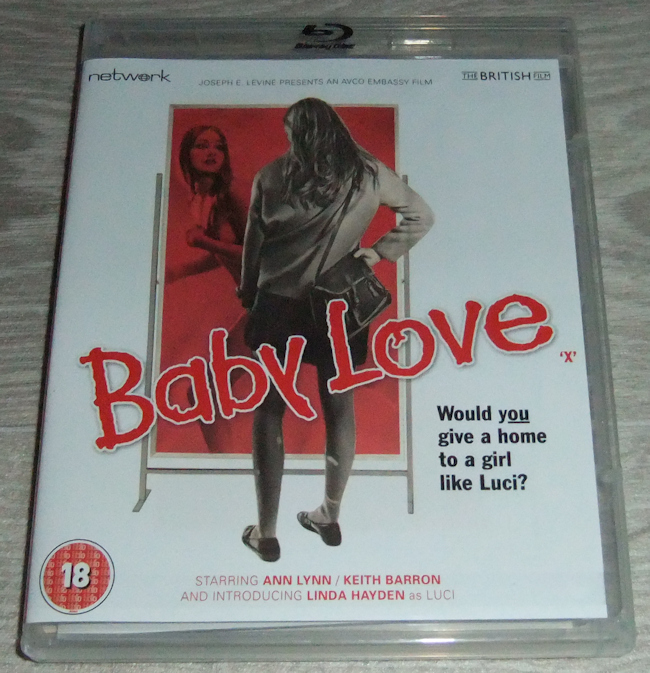Deep in the heart of Germany…
Estate agent, Jonathon, is offered the prosperous job of selling properties to a Transylvanian count but to do so must take a long trek into the isolated man’s homeland to close the deal. Thinking of career prospects and his beautiful wife, Lucy, he accepts and ventures via foot and horse into a lost world of mountains and forests, amidst which is the count’s ruined castle. Meeting the corpse-like Dracula, Jonathon closes the deal but, after realising that the villagers’ seemingly superstitious warnings of the living dead may have some foundation in truth, he soon finds himself prisoner in the castle, left to wander around for weeks as Dracula himself heads off to his new country by ship. Having spotted a picture of Lucy he’s also now out to acquire himself a new woman. Back in Wismar Dracula’s ship (now with a dead crew) arrives but unleashes on the town a horrific plague as rats pour onto the streets. Soon, mass numbers of the population are dying as the disease spreads and the vampire places his coffins at strategic points around the town; meanwhile the deeply lethargic Jonathon manages to escape before desperately attempting to head back home so he can save his otherwise doomed lover.
Taking the 1922 silent movie as a template was a fairly brave move as it was already an unofficial (and once legally denounced) version of Bram Stoker’s book and took many liberties with the source material. Thus, the Werner Herzog film can be considered more of a remake of a film than yet another adaptation of Dracula, though it certainly qualifies as the latter too. Herzog framed a number of the shots almost identically to the silent version, pre-empting the Psycho ethic that was (unsuccessfully?) adopted by Gus Van Sant a couple of decades later. It was a more relevant approach in the case of Nosferatu however because not only was it updating a silent film for sound-obsessed modern audiences, it also expanded on certain aspects and created an altogether more powerful experience. In fact, the use of sound in this version is incredibly instrumental in formulating a profound experience for viewers - the castle itself is a gothic joy to allow oneself to become a part of as wind howls through the corridors and rooms while wolves constantly whine in the distance. The music (from classical sources as well as German ambient group Popol Vuh) is overwhelmingly dark, thrusting forward an incremental feeling of impending doom like few other movies. It’s a chillingly grim world that Herzog creates. Even before that, the long journey to the castle is emphasised more here than in any other Dracula adaptation. Indeed, when Fox saw the first cut they wanted it shortened, not realising that Herzog was envisioning the metaphoric voyage of the spirit. Thankfully this is generally complete in the German cut. Use of landscape is monumental and absorbing.
The actors are well suited to their roles: Bruno Ganz as Jonathon plays an innocent man lost in a supernatural realm, doomed to a fate he cannot realistically control. Similarly, the vampire (Klaus Kinski, an actor famous for his clashes with Herzog on their many team-ups) is withered and pathetic as his deathly existence continues to sprawl meaninglessly across centuries. Kinski’s portrayal here, while not necessarily aping the Stoker character exactly, is unique and fixating. The other lead, Isabelle Adjani as Lucy, provides a captivating physical appearance coupled with melancholic presence helping us identify with her character’s futile plight. The conclusion, without giving anything away, is different to both the novel and the silent Murnau film. Unfortunately, the film was ridiculed in some quarters during its early days, not helped by the English version which was cut in the US and displayed a voice track uttered by people who couldn’t actually speak English, this alternate version having being shot simultaneously with the same cast/crew: it resulted in an oddity. The full German version gave cause to re-evaluate it but even there some may find it slow and theatrical in places. For me it works wonders and, dare I say (sorry, Stoker fans), the 1979 of Nosferatu is actually my favourite version of Dracula.
For years I’d only seen this on Fox’s old UK videotape. It had the dreaded English language track (in mono) with a fullscreen transfer, plus it had been blasphemously shortened by some twelve minutes. Even then I gradually developed an appreciation for the material, so it was some revelation when I finally picked up the first Anchor Bay US DVD just prior to the millennium: widescreen, German language, and uncut (though the monaural English cut was contained on the flip side of the disc). It was like a goldmine - what was once something that hinted at an incredible world suddenly became a beautifully nightmarish landscape of utter doom (that’s a good thing by the way). Of course it’s now one of my favourite viewing experiences. It’s been re-released by Anchor Bay various times in the US and UK but they’re basically variations on the same original disc. The transfer was good for its time but is looking quite rough now. It was eventually resurrected in the UK by BFI on Blu-ray, with a HD transfer that outshined former DVDs and audio in either English or German language (the latter having mono or 5.1 surround options). I picked up the beautiful steelbook at the time - now long out of print - which came with a good quality booklet and lovely original poster art across the metallic exterior (see above). The film was also available within a fairly priced Blu-ray collection of Herzog movies, and stateside from Scream Factory.


